Macro Meal Planner Spreadsheet
I’ve been tracking my macros consistently for the last 5 weeks or so and it is still a stressful experience. Admittedly it falls under the category of “first world problems” but still a stress that’s worth eradicating if I can.
I’ve got myself into a reasonably consistent habit for breakfast and lunch but I leave all the macro mathematics for when I get home and am left trying to fathom out how to feed the family with something that could be considered appetising but still meets whatever macro jigsaw piece I have left

This weekend I announced that I had only protein left in my allowance and therefore was going to have a sea bass fillet and a lean chicken breast for tea. None of the family were terribly keen to join me and I can’t claim to have enjoyed my fueling.
What I needed was a forward planning device. A macro meal planner that enabled me to juggle my repertoire of meals and snacks so that I could create a semi-balanced and desirable macro plan.
That sounds like a spreadsheet project to me. I set too and created the spreadsheet that meets my macro meal planner needs and thought I’d share it with you all, in case you share my macro jigsaw dilemmas.
Download the weekly macro planning template here (Google Sheets).
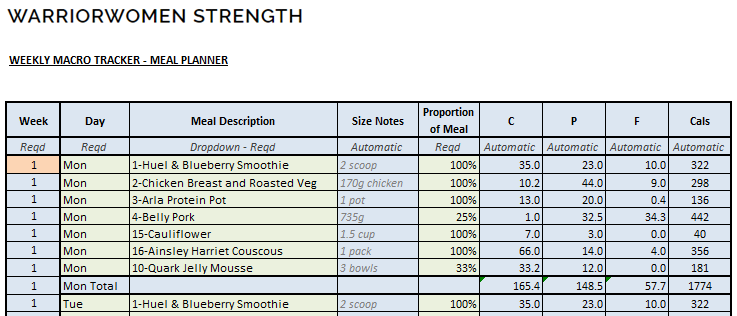
What I wanted to do was have a list of my regular meals and snack options with notes on portion sizes. I then wanted to be able to select from this list, adjusting portions as required and then slot in assorted snack options until I hit my macro targets on the nose.
The targets are included and there is a separate section that shows how your weekly accuracy is coming along.
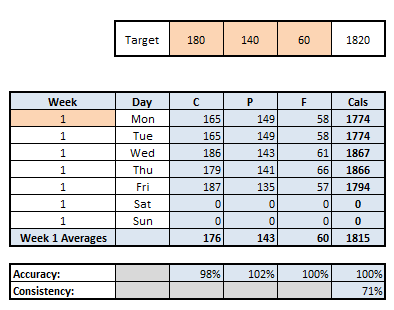
I plan to do this 5 to 7 days in advance so we all know what’s on the menu for tea and we can make sure we have the right supplies. I also know what snack options I have for that mid-afternoon hangry moment and remove the risk of consuming my total fat allowance before I get home.
It takes some time to add all your regular meals but it’s the only way to ensure the entries are accurate and are totally me-focused. If you download the spreadsheet you will probably want to clear out my meal list and create your own. I’ve included blank templates as well so you can start from scratch.
I reckon it will only take me a few weeks to fully populate as I intend to keep my meal lists fairly bland and repetitive. The less thinking about food the better as far as my waistline is concerned – I need to avoid palate tantalisation.
I will use this spreadsheet as my macro meal planner tool and will log my actual intake on an app as I think it’s easier to keep the history in an app rather than the spreadsheet.
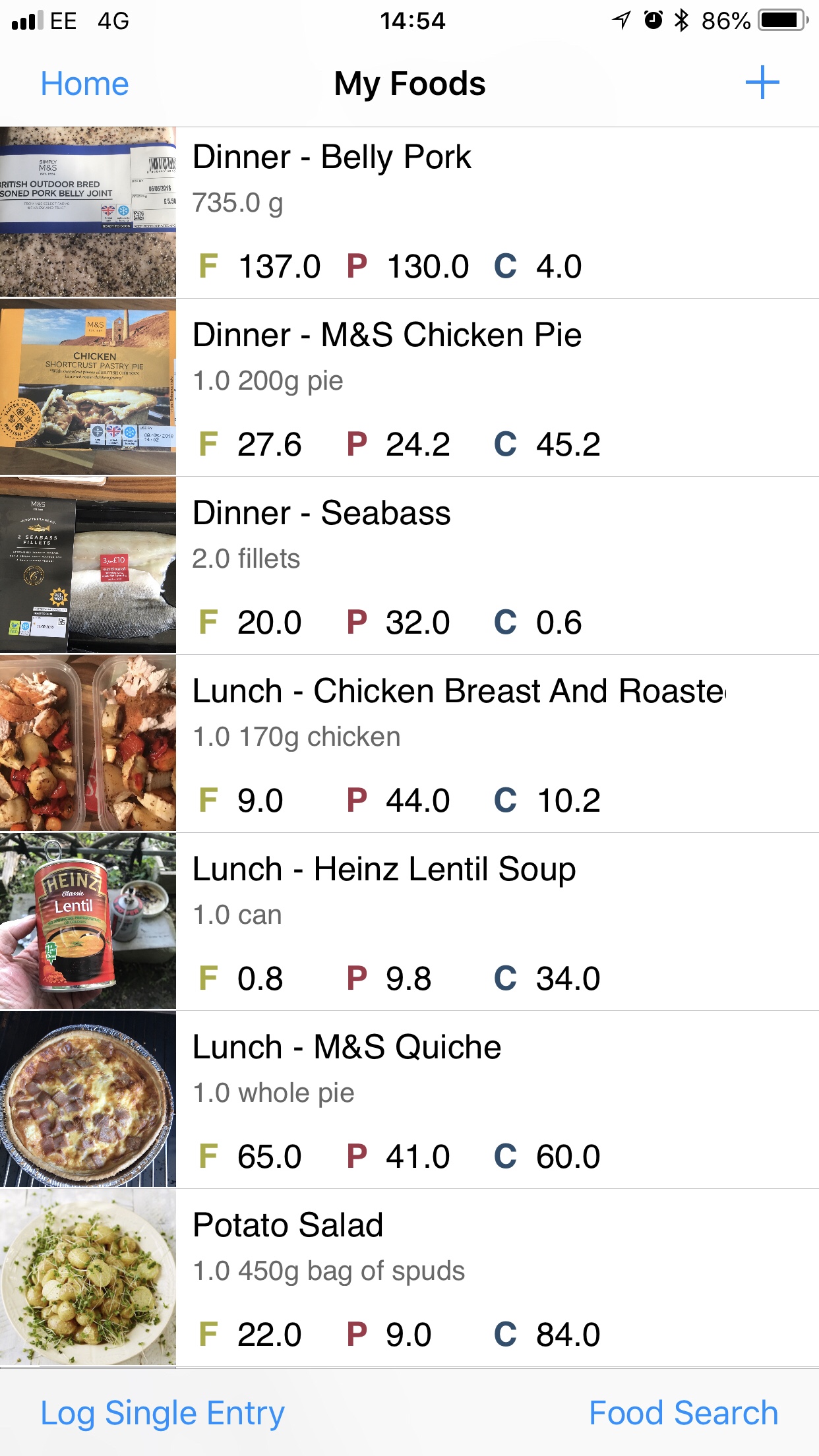
I’ve become quite disappointed by MyFitnessPal (MFP) recently. There are so many inaccuracies and it drives me nuts to keep within my macro target and find that the calories are way off plan. It frustrates me that MFP don’t do these error checks before they add an entry to the public database.
I’ve recently moved to MacroTrak which works perfectly with my macro meal planner. You are encouraged to build your own meal and food lists which you can illustrate with images. The daily entry is then a case of hunting for the right plate of food.
It doesn’t work for forward planning otherwise I wouldn’t have had to create my Weekly Macro Tracker.
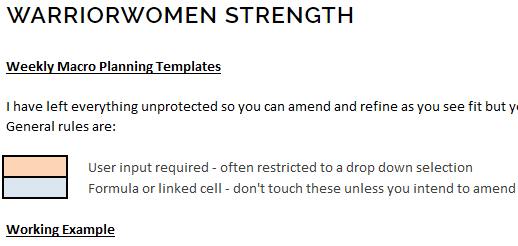
Anyway, I hope you find this useful. Remember to update anything in orange so that it meets your needs. If you want help determining your macro allowance you could download my Renaissance Diet template as well.
Note that I’ve included two meal planners, one for consistent daily targets and another for high, low, medium days if you like to alter your targets according to whether it’s a training or test day.
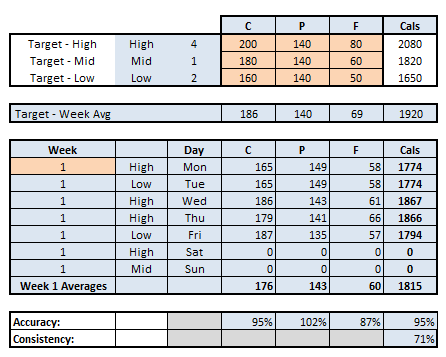
Let me know how you get on.
